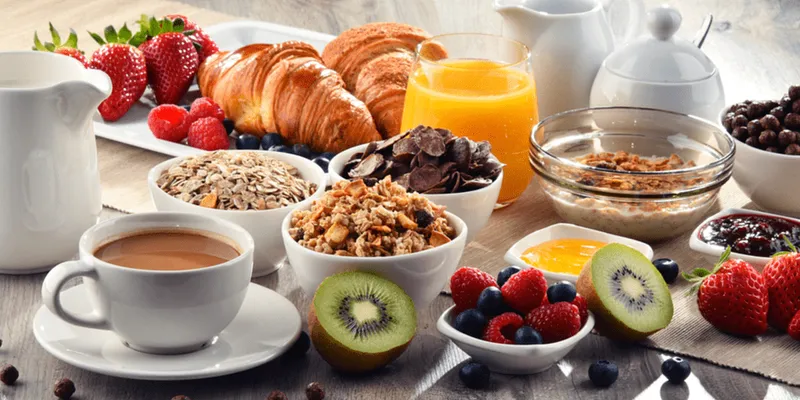Top 5 food changes we need to make for better health
What would be the top five changes that would contribute tremendously to our positive health? Let’s break these down today.
Diet, nutrition, and lifestyle protocols constantly play a ping pong game with our health. It can be confusing with new trends and conflicting research coming up all the time. Trying to fit a therapeutic diet into our health requirements is like fitting a square peg into a round hole.
Does the Indian diet need to go towards a keto or paleo approach? Do we need to go vegan for the best health? What can we do when we are downright confused?
What would be the top five changes that would contribute tremendously to our positive health? Let’s break these down today.
While these are some recommendations based on my clinical experience, do remember that you are unique. You might need more specific tailored recommendations. These changes will be safe and contribute the most to feeling better in various systems, relieve several symptoms, and help with mental equilibrium.

Fill with fibre
When you try to bring in three different coloured non-starchy vegetables into a plate, you’ve also managed to increase your level of fibre.
Fibre helps with better blood sugar control, healthy elimination, improved detoxification, optimised hormone balance, and better sleep.
Starting your meal with fibre—first raw and then cooked—will help your body better metabolise your grains and prevent blood sugar swings.
Having rice after fibre and protein is a whole lot different than having it at the start of the meal as they don’t usually add weight gain. Moreover, they do not trigger an insulin response or swing your blood sugar and feed on good bacteria.
They also stabilise your energy, blood sugar, mood, and hormones when combined with ample protein and fat at the start of the day.
Start your meal with two or three different non-starchy vegetables like avocados, leafy greens, lettuce, spring greens, spinach, methi, arugula, capsicum, endive, broccoli, broccoli sprouts, kale, chard, cabbage, onions, mushrooms, cauliflower, Brussels sprouts, sauerkraut, artichokes, beetroot, alfalfa sprouts, green beans, celery, Bok choy, radish, watercress, turnip, asparagus, garlic, leeks, fennel, spring onions, ginger, zucchini, and parsley.
Power up with protein
Whether you follow an omnivore or a vegan diet, you need optimal amounts of protein to repair and restore.
The adrenal glands, which sit on top of the kidneys, need protein to stabilise blood sugar, maintain adrenal function correctly, balance hormones, repair skin, hair and nails, boost brain function, improve sleep quality, improve stress resilience, and aid in the recovery after exercise.
High-quality proteins include grass-fed meat, beef, free-range chicken, wild-caught fish, scallops, oysters, liver, clams, shrimp, sardines, collagen, free-range eggs, legumes, chickpeas, beans, nuts, seeds, tofu, peas, and dairy.
Whatever your diet might be, prioritise protein with fibre. You do not need to get caught up in calories, calculations, and apps. You also need to see if your breakfast has substantial protein. Avoid whey or soy-based protein powders as most people are sensitive to them.
Skip starting with snacking
A common practice is to begin the first meal of the day with caffeine and dry snacks, which includes tea or coffee with chips, biscuits, raw or toasted nuts, khakhras, fried mung, roast papad, low-fat, gluten-free, or sugar-free snacks, or similar processed foods.
While the label can read fat-free, gluten-free, etc., to be reassuring and convincing, our body’s digestive function is low in the morning. Having hunger is not the only sign that your digestion is optimal. You could have ravenous hunger and still have weak digestion, and this is very common.
Dry snacks and caffeine are a bad combination for the gastrointestinal system. Caffeine dries the mucosa and the dry snacks add to the problem, which ends up weakening Agni and increasing Vata (causing an imbalance in the nervous system).
Have your coffee after a warm-cooked breakfast. Avoid or have dry snacks in moderation and as part of a bigger meal. These snacks are also addictive and high in salt and can contribute to numbing your taste buds, subsequently seeking out strong tastes like salt and sugar.
Fire Agni with ghee
Agni requires stoking to remain strong. Excess fasting and eating frequently can both weaken Agni, leading to weak digestive function.
The digestive fire is a lot like the ceremonial fire or a havan. Using ghee to cook your food is tridoshic, safe, and beneficial for all body constitutions, and helps keep Agni strong.
Start your cooking by simmering ghee on a low flame, adding the spices to wake them up, and then the ingredients to cook. Spices are a great digestive aid, and simmering ginger, turmeric, and coriander in ghee is a great way to support healthy digestion, the key to all health.

Representational Image | Credit: Viktor Smith
Timing grains
Different grains might be needed by different body constitutions, but the general guideline is keeping them whole and timing them correctly in the day.
Primarily, grains are sweet to taste and contain the elements of earth and water, which makes them heavier and grounding. They have been vilified, but unless you are trying to reverse diabetes, they are stabilising the nervous system. They are more neutral or cooling to your body and are necessary for digestion.
Consuming a main meal without a whole grain can be challenging for digestion. They build the tissues in the body and balance all body constitutions. Keep the heavier grains, including wheat, oats, and buckwheat, at lunch when the digestive fire is strong. Keep the lighter grains such as quinoa or millet for dinner.
Simple recommendations make a world of difference to your health. My mantra is —Simplify rather than complicate.
Edited by Suman Singh
(Disclaimer: The views and opinions expressed in this article are those of the author and do not necessarily reflect the views of YourStory.)









